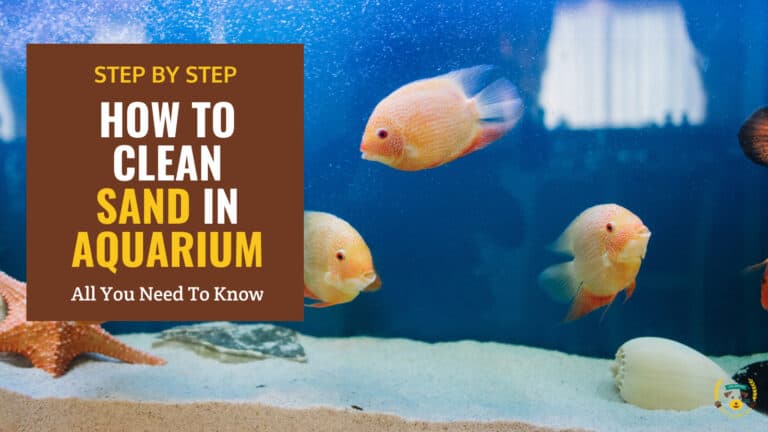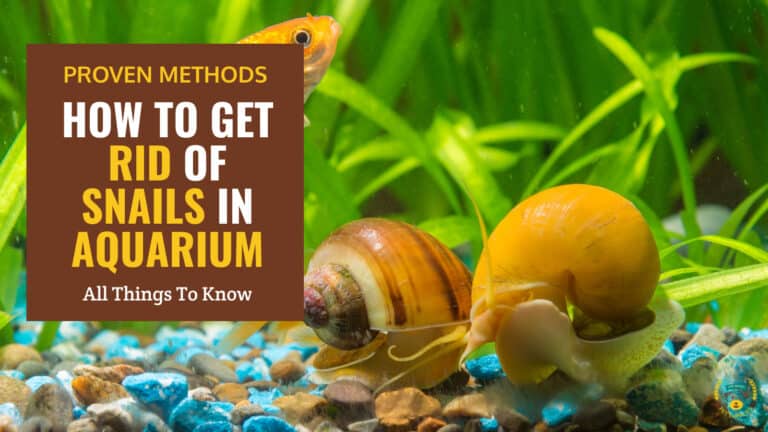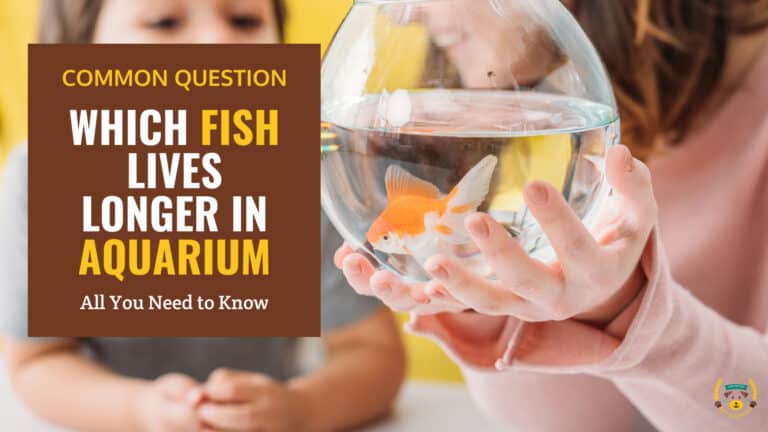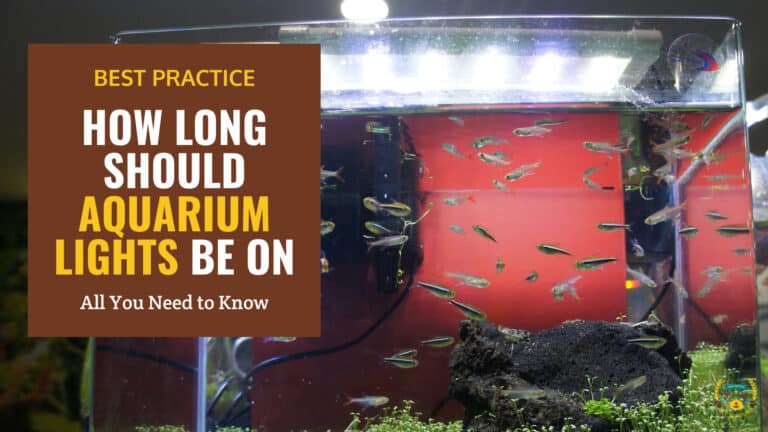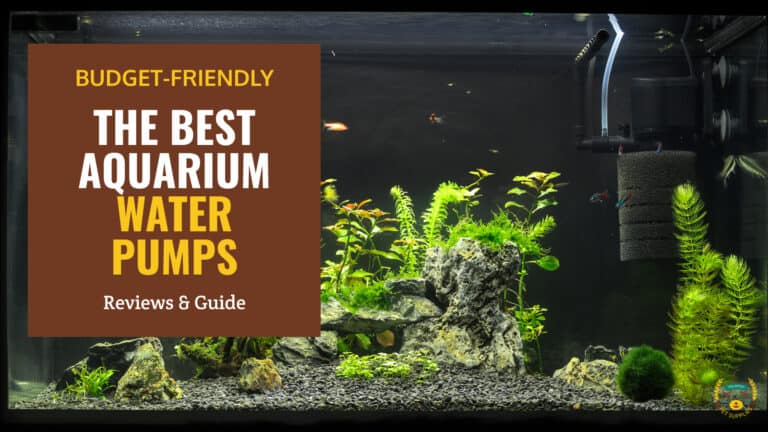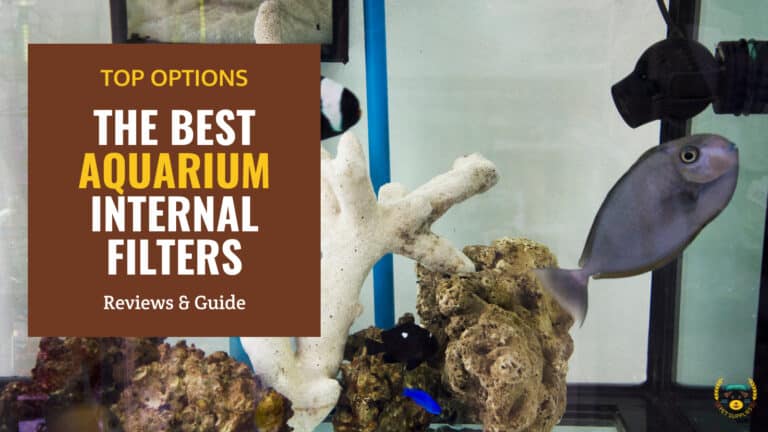8 Low Maintenance Fish for Beginners
Last updated: January 29, 2024
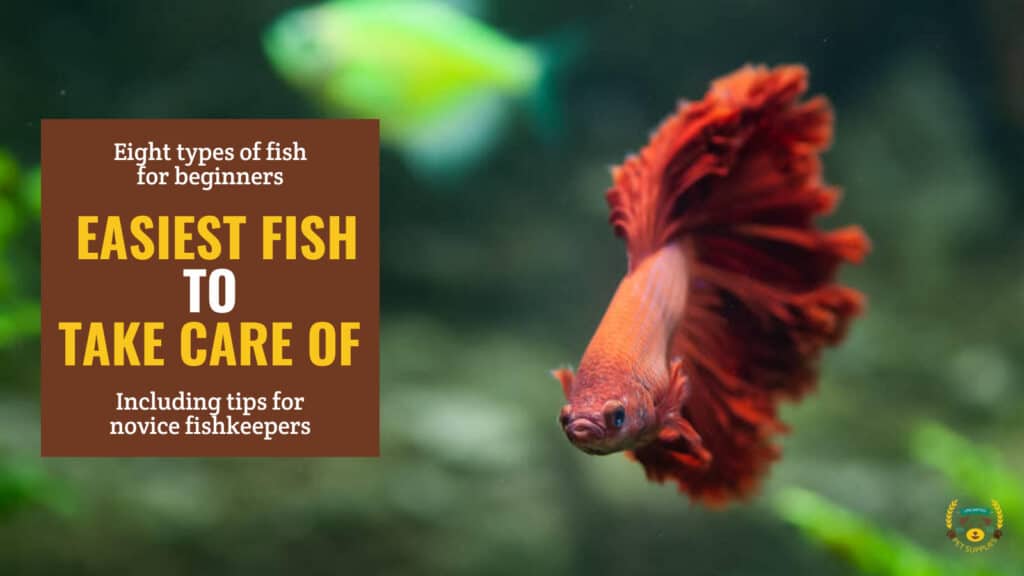
Summary
- Guppies are peaceful and hardy fish that are easy to feed and care for.
- Cory catfish are bottom-feeders that help to keep the tank clean. They are also peaceful and hardy fish.
- Bettas are brightly colored fish that are relatively easy to care for. However, male bettas must be kept apart, as they will fight.
- Dwarf gouramis are peaceful and timid fish that like to swim in pairs. They are also relatively easy to care for.
- Neon tetras are small, schooling fish that are brightly colored and easy to care for.
- Black skirt tetras are similar to neon tetras, but they are larger and have a black stripe running down their sides.
- Cherry barbs are small, active fish that are easy to care for. They are also relatively peaceful fish.
- Zebra danios are small, hardy fish that are easy to feed and care for. They are also relatively peaceful fish.
34% of households that keep fish consider it a rewarding activity [1]. Over the last few decades, keeping fish has developed into a popular hobby for many individuals. People take tremendous interest in their tanks and fish collections, and some aficionados even breed their own fish. Additionally, fish tanks can serve as the focal point of a room and a topic of conversation with visitors.
If you'd like to learn about fish keeping, it's a good idea to start with low-maintenance fish. There are a lot of lists of the easiest fish to take care of. You will simply need to learn what your preferences are.
Selecting a fish that is beginner-friendly will ease some of the tension associated with fish keeping. Low-maintenance fish are typically hardy and more forgiving of beginning mistakes than other varieties of fish.
Is Fish Really a Low Maintenance Pet?
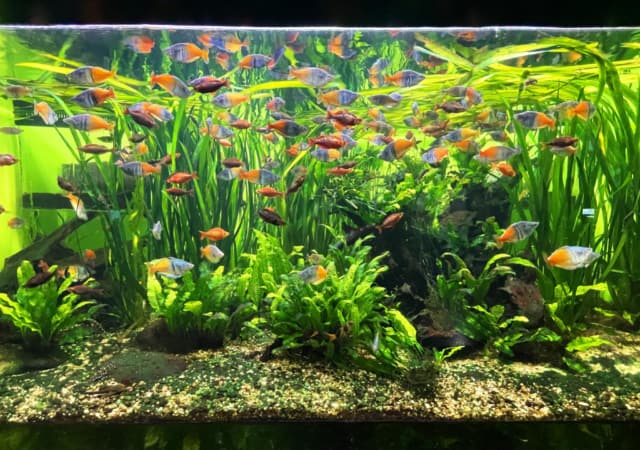
Fish make excellent pets for folks who lack the time or space required for other common pets. Choosing and arranging aquariums for fish may also provide color and enjoyment to a home. Observing fish in an aquarium has been associated with reducing stress. Pet fish come in a variety of shapes, sizes, and colors, so it is important to decide what type of fish you want.
Freshwater fish are generally less expensive and easier to care of than other sorts of pets, which contributes to the idea that they are simple to keep.
8 Low Maintenance Fish for Beginners
When choosing fish for a beginner aquarist, one of the most important elements to consider is selecting low-maintenance species. In your first attempt at something new, avoid overloading yourself with too many obligations too soon.
1. Guppy
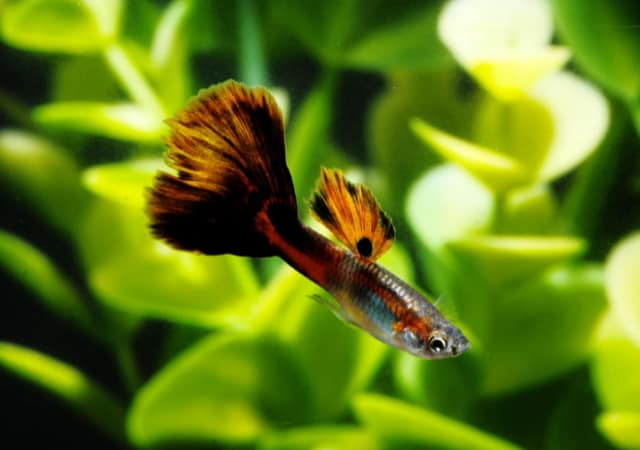
The Guppy Fish, often known as the million-fish or rainbow fish, is a globally recognized species. It is native to Northeast and South America but is now primarily bred in captivity. It has become a popular household tropical fish that almost every aquarist keeps at some point.
Guppies are peaceful fish and relatively easy to maintain. For beginning aquarists, these widely dispersed tropical fish are a hardy breed that can adapt to a variety of water conditions, making them an excellent choice for a novice.
These omnivores are not particular about what they eat. They can consume the majority of foods without risk to their health. Regular fish flakes, live or frozen brine shrimp, Daphnia, and blood worms can all be used as food.
Guppies are susceptible to a few illnesses, such as fungus infections, but by starting with a healthy stock of fish, you might be able to avoid these problems. Therefore, buy healthy fish from pet stores that source from local breeders instead of imported fish, as they are less likely to have been traumatized during transportation and have adapted to living in an aquarium rather than a hatchery.
2. Corydoras (Cory Catfish)
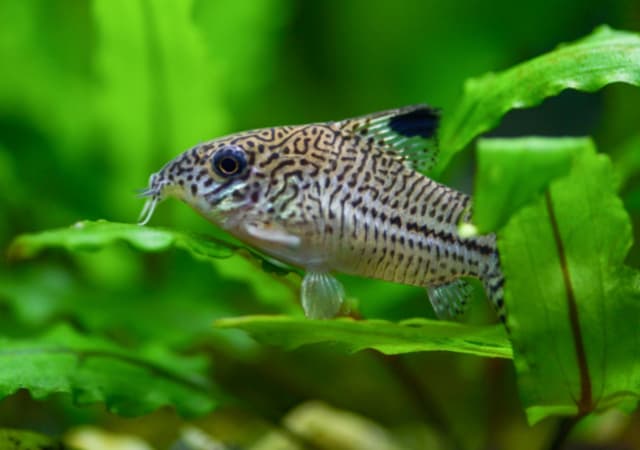
Catfish (Siluriformes) are also known as Cory Cats. They originated in Brazil, South America, and the Upper Rio Guapore. Ample quantities are accessible worldwide in 140 varieties, making them a must-have for aquariums. Even as bottom-feeding catfish, they have a calm demeanor and can live up to twenty years.
These fish have a specially developed intestinal lining that enables them to absorb oxygen from the surrounding air. Cory catfish occasionally dart to the tank's surface to breathe the air above the water.
Cory catfish are diurnal, sleeping at night and being active throughout the day. The fish move gently through the tank's bottom, searching for food in the substrate.
The tank must contain the appropriate water parameters and decorations to help the cory catfish adjust to captivity. Feed the fish an omnivorous diet consisting of foods that sink to the tank's bottom.
The typical price of a cory catfish is between $4 and $8. They can be found in most pet stores and online. Certain cory catfish species are more popular than others. The most common varieties in the United States are panda cories, peppered cories, and similis cories.
3. Betta
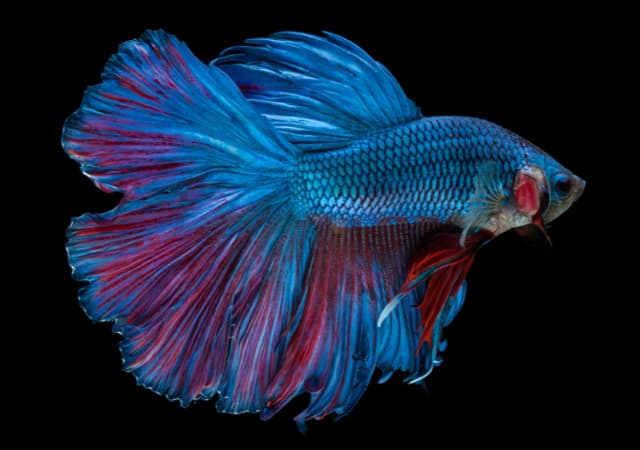
Thailand's Siamese Fighting Fish (Betta splendens) is one of the most popular freshwater aquarium fish. This is due to their visually pleasing appearance. They are incredibly hardy Labyrinth Fish when housed under optimal conditions, although they are frequently kept in very small tanks that are far from ideal.
When shopping for the best betta fish food, the most critical point is that these fish are inherently carnivores and require a high protein diet. Their upturned mouth displays what they prefer to eat in the wild: insects that have fallen into the water or are floating on the surface.
The optimal betta fish diet would comprise a mix of freeze-dried foods, live foods (mosquito larvae, brine shrimp, and bloodworms), and high-protein fish flakes and pellets.
Bettas will fight; thus, males must be kept apart. Generally, female bettas can be maintained together in a sufficiently large aquarium. It is recommended that beginners start with one male betta fish in their own tank. Bettas are rather easy to keep in a bigger aquarium, and one male betta can be housed with other non-aggressive fish of comparable size.
Make sure not to overfeed your betta, as their "stomach" is around the size of their eyeball. Only let them eat as much food as they can consume in three minutes twice a day, not until they are full. The amount of food you feed will vary according to the size of your fish and the pellet size. It is recommended that bettas consume betta-specific pellets to provide optimum nourishment.
Caring for betta fish may be a lot of fun, and once they are established in their habitats, there is little else to do except maintain and beautify the tank, feed them, and admire their colors.
4. Dwarf Gourami
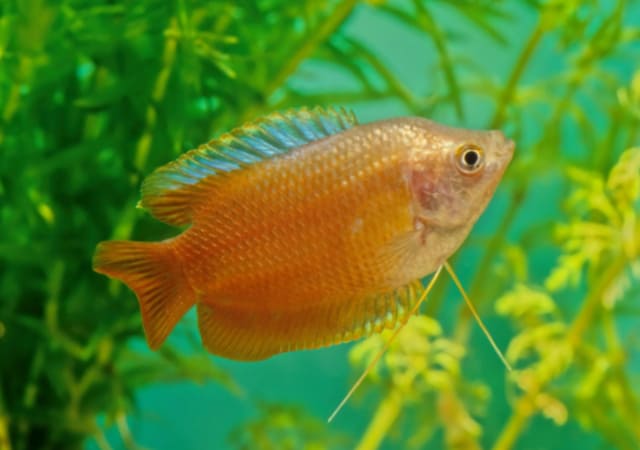
Dwarf gouramis, scientifically known as Trichogaster Lalius, like slow-moving water in densely vegetated streams and lakes. They are found throughout Pakistan, India, and Bangladesh and in areas where they have been introduced outside of their native habitats.
In nature, gouramis feed on small insects and larvae at the water's surface and graze on plant algae growth. They will consume flake food, freeze-dried food, frozen foods, and vegetable tablets when in captivity. To ensure their continued health, supplement their diet with live items such as worms on a regular basis. Additionally, live foods should be employed to condition breeding pairs.
The dwarf gourami is a timid and friendly fish. If you have a pair, the fish will swim in unison. Dwarf gouramis are classified as labyrinth fish, which means they breathe directly from the air via a lung-like labyrinth organ and require access to the surface of the water. If you breed this species, you will notice that their intricate bubble nests demonstrate excellent construction instincts.
5. Neon Tetra
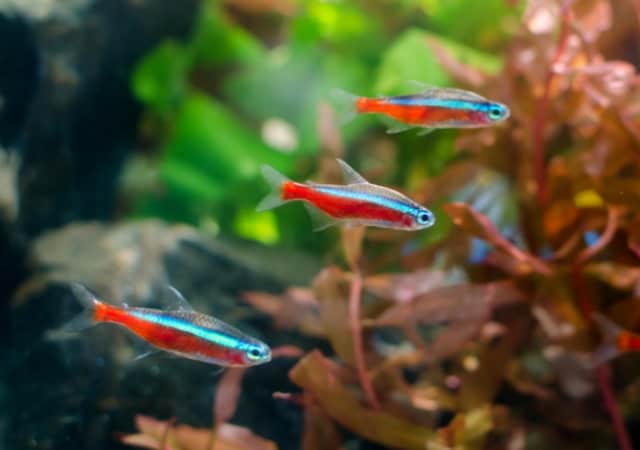
The neon tetra (Paracheirodon innesi) is a tiny schooling fish found in South American tropical freshwater rivers and streams. For decades, neons have been a staple of the aquarium trade. They are often available all year at any live fish store.
Due to the ease with which neons may be bred in captivity, the majority of neons encountered in the aquarium commerce have been farm-grown. This positive development suggests that they have adapted to survive in aquarium settings over generations. As a result, they are less fussy about water quality than wild-caught species.
In the wild, neon tetras are omnivores, consuming algae, tiny invertebrates, and insect larvae. This diet can be replicated in the aquarium using a high-quality flake meal, blanched zucchini medallions, and a variety of frozen items as treats.
Neon tetras love frozen blood worms, daphnia, and brine shrimp. You may see neons swimming around the aquarium with what looks like bloodworm cigars in their mouths because bloodworms can be too big for them to swallow whole. If your neighborhood fish store sells live food, fruit flies and blackworms will be happily received as well.
Although they appear to be little, These fish, with their vibrant blue and red stripes, make an excellent addition to a communal freshwater aquarium. Neon tetras are generally quite easygoing, and their small size means they have a negligible effect on water quality.
6. Black Skirt Tetra

Gymnocorymbus ternetzi (Black Skirt Tetras) is a unique addition to community tanks. While other Characidae species are recognized for their vibrant colors, these fish have a darker appearance. They are still pretty lovely and stand out in well-maintained aquariums.
Black Skirt Tetras are not selective eaters. They graze on plants and almost any insect they come across in the wild.
This species should thrive in captivity on a diet of commercially available dry food. You can feed nutrient-dense flakes or pellets as their primary source of nutrition.
Numerous hobbyists like to augment their diets with live food. Black Skirt Tetras adore bloodworms and brine shrimp as appetizers. These will provide them with some diversity and enrichment, which can result in lowering their stress levels.
Proper water conditions are critical for the health of your fish. Inadequate quality might result in unneeded stress or a variety of ailments. The impact of this will be detrimental to the health of the species and may result in mortality.
A basic rule of thumb for any fish is to match its natural habitat's water conditions. These fish inhabit warm, somewhat acidic pools of water in South America.
7. Cherry Barb
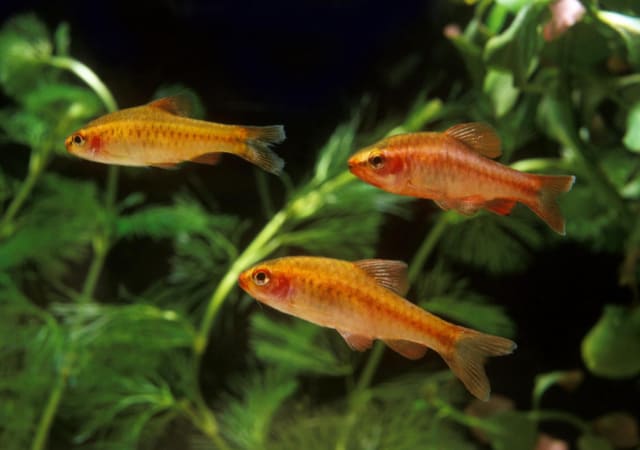
For nearly a century, the Cherry Barb (Puntius Titteya) has been a fixture of the aquarium hobby. Initially discovered in Sri Lanka, it has subsequently spread to a number of nations, including considerable numbers in Mexico and Colombia.
Cherry barbs are primarily found in streams and small bodies of water in the wild. They enjoy calm, slow-moving water and are frequently found in regions with overhanging vegetation.
The Cherry Barb, as an omnivore, will accept a broad variety of foods. A typical tropical pellet will meet the majority of its nutritional requirements. On occasion, you can augment with fresh vegetables and frozen goodies. The majority of Cherry Barbs raised in captivity are accustomed to eating pellets and are not picky about the type.
It's critical to remember that cherry barbs are schooling fish and should be kept in groups of at least five, with larger groups preferred if available space permits. If housed in groups of fewer than five fish, they frequently become anxious and spend the majority of their time hiding.
To acclimate them, cherry barbs aquariums should constantly be densely planted, simulating their natural environment. The live plants (artificial plants will also work) help to dim the aquarium's lighting and offer a semi-covered substrate for the fish to thrive on. When planting the tank, always leave a small section open to allow for free swimming.
As long as they are regularly maintained, Cherry Barbs are relatively easy to take care of. In planted tanks, ensure that dead plant material is removed on a regular basis and that any pH changes between day and night are noted.
8. Zebra Danio
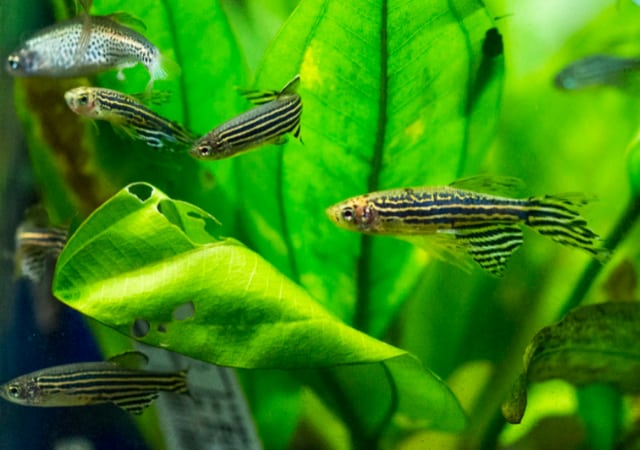
Zebra danios are native to India, Bhutan, and Bangladesh's tropical and subtropical seas. The ecological habitat of the zebra danio varies according to the season.
Zebra danios thrive in a variety of settings, including slow-moving streams and rivers, flooded ponds, and rice paddies. The fish have acclimated to a variety of water parameters and are accustomed to different vegetation and light levels.
In the wild, zebra danios consume a variety of different foods, including algae, worms, crustaceans, and mosquito larvae. In captivity, provide a similarly diversified diet to ensure that the fish acquire all of the required nutrients from their food.
Feed high-quality fish flakes, algae wafers, and greens such as spinach and cucumber to zebra danios. Provide them with live or frozen items such as daphnia and bloodworms twice a week as a high-protein reward.
They are fun, active fish who get along well with the majority of fish in a communal tank. The zebra danios swim rapidly around the tank's upper and middle portions and are diurnal, which means they are more active during the day than at night. The fish are popular among aquarists due to their sociability and gentle temperament, yet they can become aggressive if kept in a crowded tank.
What makes a fish beginner-friendly?
Low-maintenance fish require little attention and care. They are hardy, adaptable, and prefer to remain alone in the tank. Additionally, they make excellent tankmates and are rather engaging during feeding.
A hardy fish is any fish that is easy to keep in a home aquarium due to its capacity to adapt to a wide variety of water parameters, as there is a good likelihood that your water parameters will not be optimal at all times when you are a beginner.
Thus, your fish must survive and adapt to any fluctuations that occur. It takes time to learn the reasons and effects of changes in water conditions within the tank, which is why hardy fish should be your first pick when purchasing your first tank, as they are the easiest to care of.
Another important characteristic of beginner-friendly fish is their peaceful attitude. Beginners prefer community tanks because they offer more diversity and interest, which is why they must choose fish that get along well with their tankmates. Gentle fish thrive in community tanks since they are not territorial and will not battle for control. This is a critical consideration when selecting beginner-friendly species.
Using these beginner-friendly fish will help you solidify your skills, and if you're comfortable and ready, you might want to progress to less hardy or intermediate fish. Nonetheless, it would help if you made every effort to give your fish the proper water conditions.
How often do fish need to be fed?
It is critical to understand what your fish consume in the wild and to feed accordingly. Which type of animal are they: herbivores, carnivores, or omnivores? Because the majority of aquarists keep a range of species in their aquariums, it is essential to give a selection of different meals.
For instance, livebearers are predominantly herbivores, but tetras are carnivores. If, like many aquarists, you keep both types of fish in your aquarium, alternate between meat protein and plant-based meals to keep everyone happy and healthy. Variety is critical regardless of the type of fish kept, as even carnivores benefit from a plant-based diet and vice versa.
You should ensure that the size of the food you feed your fish corresponds to the size of their mouths. In other words, huge predatory fish are rarely interested in little flake crumbles, while small fish such as Neon Tetras cannot swallow large pellets. Uneaten food soon becomes a pollutant in your aquarium.
When dispensing frozen foods, use a turkey baster or large syringe to ensure that everyone gets some. Drop a small amount of food near the surface to attract top feeders and gently trickle some further into the water column to attract mid-water and bottom feeders.
Can low-maintenance fish be put in a tank without a filter?
The filter in your aquarium's water is responsible for removing surplus food, decomposing organic matter, hazardous chemicals, and the fish's waste products. Fish regularly discharge excrement as they swim through the water.
Wastes, as they decompose, can contaminate water, posing a threat to fish tanks. As a result, the pet's dazzling colors may fade, its growth may slow, and it may become infected. Without a filter, an aquarium is unfit for fish to live in.
If a standard filter is out of your financial range at the moment, consider investing in a little sponge filter.
Due to the porous surface of sponge filters, low-maintenance fish keeping will become even more convenient. When it comes to caring for pet fish, it makes no difference how tough they are.
Tips Every Beginner Fishkeeper Should Know
Research the fish before purchase.
You should choose fish that will thrive in the water you can provide. If you are unable to invest in one of the top water heaters for fish tanks, for example, consider goldfish, which is like cooler water. Similarly, assess the pH of your water and choose fish that thrive in that range.
Conduct research on diverse species to determine their preferred habitats. Determine the size of different varieties of fish at maturity and whether they can live comfortably in your aquarium. Certain species of fish, such as corys, flourish solely in schools. Again, research on specific species before purchasing to ascertain their preferences.
Pick the right aquarium.
Selecting an aquarium tank for your fish might be challenging. Not only must you match the size and style of the tank to the fish, but you must also ensure that the aquarium fits the surrounding habitat. A tank that is too large for your home can limit your capacity to appreciate your fish.
After deciding on the size of the tank to purchase, there are a few other considerations to make. To begin, you should choose between a saltwater or freshwater tank. The primary distinctions are that saltwater fish are typically more brilliant than their less vibrant freshwater counterparts, while freshwater tanks are far less expensive and easier to set up and maintain than saltwater tanks. Freshwater aquariums are strongly suggested for new fish owners.
Cycle your new aquarium.
Cycling is the most critical part of any aquarium's life.
Cycling is the term used to describe an aquarium's biological maturation. Before adding fish to a tank, it must be cycled, as, without it, contaminants will build up to dangerous levels, killing the fish.
Before an aquarium can cycle, it must have water and a filter. As a first step, use a dechlorinator to remove chlorine and chloramine from tap water, as these are strong antibacterial chemicals added to tap water to kill bacteria. Cycling can begin once the chlorine is eliminated and the filter is connected in and operating.
Know what equipment your fish need.
While you'll need to supply food, water, filtration, and heat for your pet fish, the exact specifications may vary depending on the fish species you choose, its growth rate, and a variety of other considerations. Depending on the fish you choose, you'll need an aquarium large enough to accommodate their growth, as well as an air pump and submersible heater.
One gallon of water per inch of full-grown fish is a decent rule of thumb for aquarium size. Although tropical fish require heating elements in their habitats, some freshwater fish prefer lower temperatures and so do not require a heater. Apart from this, you may also want to consider getting one of the top aquarium water test kits on the market. Knowing the specific equipment requirements for your pet fish is essential so you can decide what is best for them.
Maintain a regular water change schedule.
Always ensure that the water you add is compatible with the aquarium's water parameters and avoid changing more than 50% of the aquarium's volume at once.
Aquarium fish (and, to a lesser extent, plants) crave stability. If the settings are not ideal but are stable, your fish will be unconcerned. It is not an issue if the pH is 0.5 higher than the employee at your local fish store recommended.
Each time we replace the water, the parameters shift. If you perform more than one water change every day, you will cause unneeded stress to your fish, and in some cases, the death of the fish. You need to remember that water conditions fluctuate.
Avoid overfeeding your fish.
Because fish lack stomachs, they are unable to determine when to stop eating. Your fish needs only as much food as it can consume within two or three minutes, once or twice a day. Certain fish, such as goldfish, require only as much food as they can consume in a minute, whereas others have varying requirements.
Overfeeding is the most frequent mistake caused by fish owners, and it can result in a slew of significant problems in the aquarium. Excessive feeding clogs even the best filters and degrades them into chemicals that are toxic to fish. This is why the packaging of fish food includes explicit cautions about the dangers of overfeeding.
Final Thoughts
While fish are frequently assumed to be low maintenance and simple to care for, they do have certain special requirements. Indeed, depending on the type of fish you choose, you may discover that they are not nearly as straightforward as you anticipated!
First-time fish owners will struggle to learn how to manage their tank and its inhabitants properly. That is why choosing a low-maintenance fish that can handle your mistakes can ease some of your concerns.
For those who are interested in learning more about the lifespan of different fish species, you can check out our guide and learn which fish lives longer in aquarium.
References:
- Pet Industry Market Size, Trends & Ownership Statistics. Curated from https://www.americanpetproducts.org/press_industrytrends.asp

